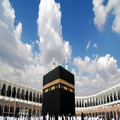Al Maktoum International Airport (DWC) is set to become a city within a city, complete with its own transport system, green zones, and a variety of entertainment and retail offerings.
This ambitious project aims to provide an unparalleled airport experience, integrating comfort, convenience, and sustainability. The design of the new passenger terminal was revealed in a tweet by Sheikh Mohammed bin Rashid Al Maktoum, Vice President, Prime Minister of the UAE, and Ruler of Dubai. Further details were shared at the 23rd Airport Show, showcasing a comprehensive preview of what will be the world’s largest airport.
One of the most striking features of DWC is the elevated rail or automated people mover (APM) system that will traverse an indoor tropical forest. This APM will transport passengers between terminals, accompanied by giant LED screens projecting various landscapes and marine habitats. DAEP emphasized the focus on passenger comfort, recreation, and mobility in a detailed video presentation. DWC is designed to blend tradition, culture, and innovation, ensuring seamless connectivity to Dubai and the wider UAE through high-speed rail (Etihad Rail), a new Metro line, air taxis, and autonomous vehicles. Passengers will have the convenience of checking in their luggage at various city locations or even from home before arriving at the airport.
Welcome to a Green Oasis
Upon arrival, passengers will be greeted by the world’s largest sun canopy and a vast green zone, symbolizing Dubai’s zero-carbon ambition. The terminal will feature large LED screens, indoor tropical gardens, and tree-lined passages, offering a relaxing and eco-friendly environment. DWC will boast 400 aircraft gates and five parallel runways within a sprawling 70-square-kilometer area. The airport will provide generous open spaces for boarding gates, extensive shopping, dining, and entertainment options, as well as first- and business-class lounges located on the upper levels.
The airport plans to use cutting-edge technologies, such as contemporary facial recognition, to expedite boarding and do away with lines. Smooth transitions between terminals and concourses will be made easier by the 14-station APM, while touchless security checkpoints and clear signage improve the overall traveler experience. The handling of baggage will be handled by a subterranean network that uses automated guided vehicles and sophisticated screening methods to process up to 30,000 bags per hour. By ensuring quick and safe baggage delivery, this technology will avoid interfering with ground handling operations.
Advanced Runway System
With four of the runways enabling simultaneous approaches, DWC will have five parallel runways that can accommodate the largest aircraft. To guarantee operating effectiveness and safety, these 4.5-kilometer runways will have double taxiways, quick departures, and substantial ground service equipment roads. With photovoltaic solar panels and other renewable energy sources powering the entire operation, DWC's design is centered around sustainability. The airport aims to achieve zero waste in landfills by implementing solar glazing, high-performance insulated buildings, and a thorough recycling system. With the help of cutting-edge water management technologies and energy-efficient appliances, water usage will be cut by 70%.
The new passenger terminal will cost an estimated Dh128 billion to build, and construction will start right away. Nearly 260 million passengers and 12 million tons of cargo are anticipated to transit through DWC each year once it is finished. Aiming to build Dubai as the world's aviation hub, DAEP is dedicated to fulfilling the increasing demands of travelers. Using cutting-edge technology, creative architecture, and environmentally conscious design, Al Maktoum International Airport is set to revolutionize air travel and establish a hub for eco-friendly, futuristic travel.

